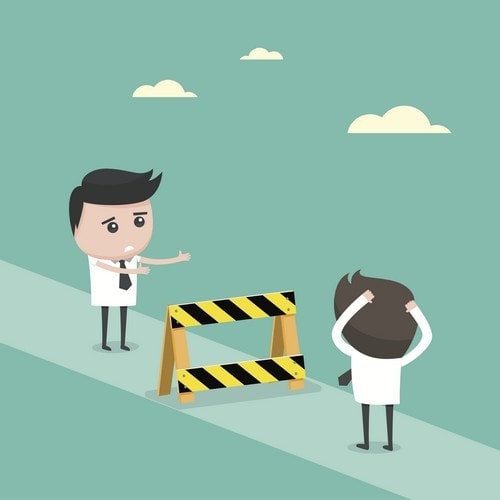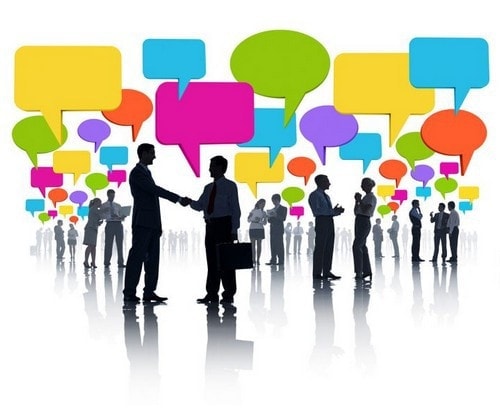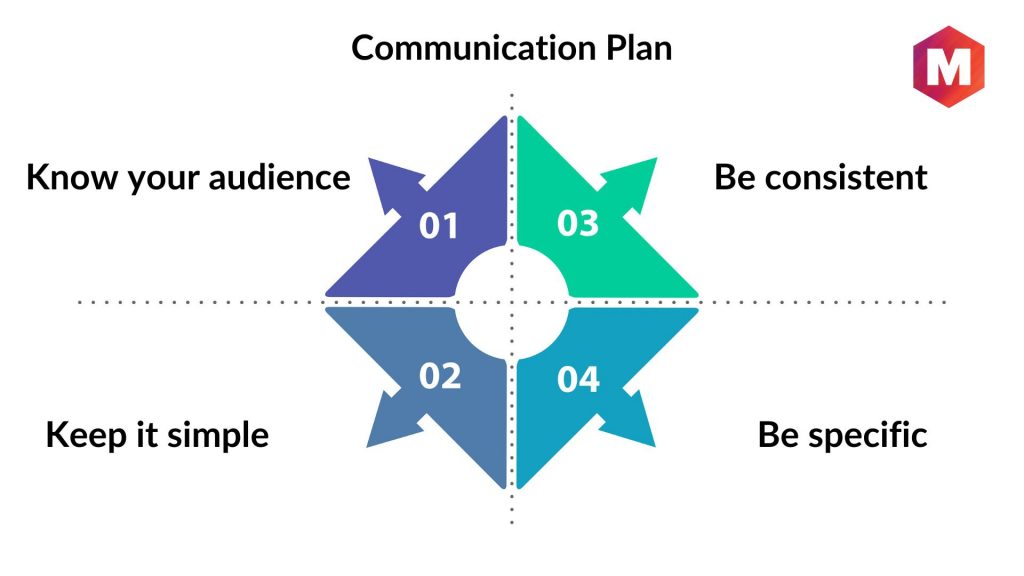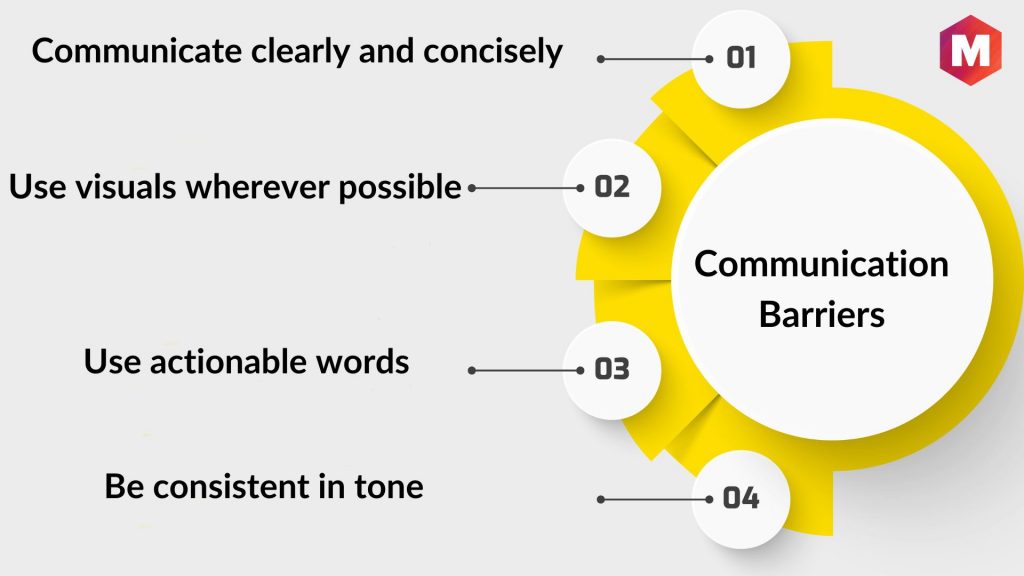Clear-cut communication is the key to success in today’s postmodern industrial world. It has become more than important than ever before to communicate clearly and succinctly your message across all forms of media to keep your brand image unblemished. Consistent, high quality and clear-cut communication will help you quell all negative propaganda that may have been floated by people within and outside your circle of influence.
Nowadays it is not enough for your products to be technologically sound, they need to be backed by strong marketing machinery disseminating up to date information about the brand through all forms of social media like Facebook, Twitter, LinkedIn etc.
Competition for every penny is high in the market and misinformation is the first tool opponents used to create mistrust.
Unfortunately, as trainers and marketers will tell you, there are a lot of barriers to your communication skills which people face. English is being used as a tool for linguistic imperialism by the west and French, Spanish, Mandarin, and Arabic are the most popular languages used literature, arts, cinema, diplomacy. By destroying all barriers to communication, you can appear as a super effective leader in whichever area you work.
Curious about the latest trends in communication strategies?
One of the most significant trends in communication today is the rise in the use of video content. According to a study by HubSpot, over 54% of consumers want to see more video content from brands they interact with. Video not only enhances engagement but also boosts the retention rate of information presented, making it an essential tool for overcoming communication barriers. Implementing concise and engaging video content can be a game changer for brands aiming to communicate effectively and efficiently.
An industry insight worth noting is the increased use of Artificial Intelligence (AI) in communication tools. AI-powered platforms like Grammarly and ProWritingAid have become integral in enhancing written communication by offering real-time suggestions and feedback on grammar and style. This helps eliminate language barriers and improves clarity in communication. According to a report from Statista, the global market for AI in communication is expected to grow significantly, emphasizing the importance of technology in overcoming traditional communication hurdles.
Table of Contents
What are Communication Barriers?
Communication is a key element of any successful workplace. It allows for ideas to be shared, tasks to be completed, and projects to come together. But when communication breaks down, it can create communication barriers and all sorts of issues in the workplace.
Communication barriers are any obstacles that prevent effective communication from taking place. They can take many forms such as physical communication barriers or gender barriers orit could be something like not knowing someone’s name or where they’re from; or it could be something much more serious like an employee who uses poor grammar and spelling on their emails.
When communication breaks down in the workplace, your company can become less efficient and less productive overall.
In today’s world, it has become increasingly important for companies to foster an environment of good communication. In fact, many studies have shown that employees who feel they can more easily communicate with their employers tend to be happier, more productive and loyal.
Four Barriers of Communication
Trainers, teachers, BPO workers often complain they are not able to communicate effectively with their customers to resolve their queries. Even advanced resolution specialists in the corporate sector admit that sound technical knowledge is not enough to satisfy the customer. You must communicate in such a way that the customer is on the same page as you.
Following are some of the most common communication barriers that happen in the communication systems because of poor management, gender differences, emotional barriers, or cultural barriers.
1) Physical Barriers
On top of the list of physical barriers is stammering and similar such speech difficulties. Next is hearing disabilities that prompt the speaker to speak loudly.
But electronic modes of communication channels have reduced the barriers of time and space and even deaf, dumb and blind people are able to communicate. Even nonverbal communication should not be ignored, and the nonverbal communication cues offered by the listener will help you alter the course of the conversation.
2) Psychological Barriers
Lack of interest, attention, distraction shown by the listener can put off the other person. Swiping the phone screen all the time, attending calls are all considered impolite. Avoiding eye contact can really put off the other person, especially if he is a position of authority. It can incite them to chide you and is treated as insolent behaviour.
Differences in perception and viewpoint can occur but if there is no hidden agenda in the minds of either party, it can be sorted out.Even religious differences and political problems can be sorted out if there is face to face communication, heart to heart communication with parties sitting together with an aim to resolve the issue.
3) Language Barriers
Using jargon or over-complicated, unfamiliar or technical terms is an artificial barrier to communication. Some CXO gets a kick out of throwing business jargon to colleagues who might not have done any courses in business administration. Conveying a clear and concise message is what excellent communication is all about.
Even in written communication, one who writes well is the one who uses simple words and presents his thoughts in an easy to understand manner. So, when readers peruse his written copy they can take part in his imagination and elicit the right responses as per the needs of the document.
4) Cultural Barriers
This is more often seen in oriental societies where there are more taboos about communication between opposite genders. Certain topics may be off-limits not just in routine conversation but in arts, cinema as well. In a corporate setting, up its best to stay away from politics, religion, sex, disability, racism or anything that puts off your colleagues.
Foreign tourists often meet generational and cultural differences as they are unable to decipher the regional colloquialism and expressions of the local people. Stress is also a major factor in why people won’t listen and is a major issue that creates a psychological barrier to communication.
Other Common Barriers of Communication include
- Lack of attention from the listener
- Jargons being used which are unfamiliar to the listener
- Taboos or emotional barriers to communication
- Disabilities which are physical in nature
- The difference in languages and therefore the problem of overcoming accent differences
- Difference in social interaction due to cultural differences.
Here is a video by Marketing91 on Communication Barriers.
How to Overcome Barriers to Communication?
Distortion of the message is the most important amongst all barrier to communication. Therefore clear communication is a must. Communicating your idea at the right time is important to overcome communication barriers.
You must have heard of the Chinese whisper – the colloquial phrase which refers to the series of recurrences of an incident wherein the final version bears only a scant resemblance to the original version. Use the following filters to get to the crux of the story.
- What happened
- Where did it happen?
- When did it happen?
- How did it happen?
- Why did it happen?
With these basic filters in place, there will be some semblance of solidity in the message and it will be less prone to distortions. Less confusion and misunderstanding will happen if you follow a systematic, clear-cut approach to getting to the base of every matter.
One satisfied customer brings only more satisfied customer, but one dissatisfied customer will share about his experience with ten more people. And in these days of social media, the number can be in thousands. Mistakes get amplified on social media while keeping your word with the customer at all costs is taken for granted and turns out to be a thankless exercise.
Earlier in the case of web 1.0, the flow of information was in one dimension from the company to the customers. But now it is a two-way process that occurs in real time.
You can see the face of your dissatisfied customer and address his concerns at once. Hashtags used by customers related to your brand in their tweets can be automatically detected and responded to by social listening tools offered by Twitter.
Big companies now use automated customer service bots to detect complaints regarding their brand in an open discussion forum and their aim is to respond immediately before the issue escalates.
Every fire is small before it becomes big and the same applies to customer service as well. Therefore, clear-cut communication will help you stay ahead of the curve in any market. It is a strong source of competitive advantage if all your internal and external stakeholders can communicate clearly with each other.
How to Create a Successful Communication Plan?
Communication is the heart of any business. It’s how you get your message across to customers, employees, partners and stakeholders.
If you want to create a successful communication plan, you need to keep in mind that it’s not just about what you say—it’s also about how you say it.
Here are some tips for creating an effective communication plan:
1. Know your audience
Who will be reading or listening to your message? What do they need to know? What are their concerns and questions? How can you address them in a way that makes them feel heard?
2. Keep it simple
You don’t want to overwhelm your audience with too much information or too many details at once, so focus on just one point at a time; otherwise they might tune out before you’ve even finished making your point!
3. Be consistent
Make sure all of your communications are consistent in tone and style; otherwise people won’t know who’s talking or who has authority over what information.
4. Be specific
Don’t use vague terms or phrases, such as “we” and “our company,” in your communications; instead, talk about yourself and your team directly.
The Role of Technology in Overcoming Communication Barriers
There are a few ways that technology can help you overcome the challenges you face when communicating effectively with your team members:
1. Communicate clearly and concisely
If you want your message to be understood clearly, then it’s essential that you state it simply and without ambiguity.
Use bullet points rather than sentences so that people can easily scan through your message and get to what matters most quickly.
2. Use visuals wherever possible
Visual content like photos, graphics, videos and infographics have higher engagement rates than text alone because they help people connect more easily with what you’re saying.
Visuals also increase comprehension by helping readers remember more information about what they’re reading than if they had only read text alone.
3. Use actionable words
The most effective messages are those that tell people what to do next. Use words like ‘you’, ‘now’ and ‘here’ to make your messages more action-oriented and encourage readers to take immediate action on your request.
4. Be consistent in tone
You want to avoid confusing or conflicting messaging so make sure that the language you use throughout your campaign is consistent with the overall message.
Final Words!
Communication barriers in the workplace exist all the time. If there are employees, chances are that their understanding of the work can differ, and that can lead to a lot of difficulty on both ends.
As a manager or a co-worker, identifying these barriers is the first step to correcting them and improving performance. Recognizing that you have communication process problems is no easy feat, but if you’re willing to be honest about them, it’s more than half the battle.
Remember: communication barriers are a fact of life when it comes to the workplace, and they won’t just magically disappear. Don’t make excuses for your behavior; if something needs fixing, fix it!
Liked this post? Check out the complete series on Communication




